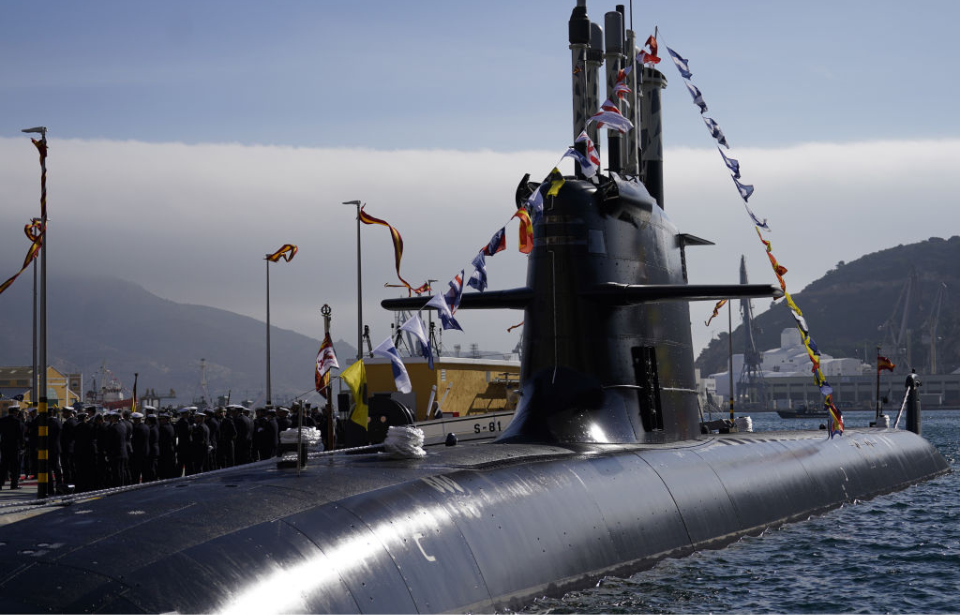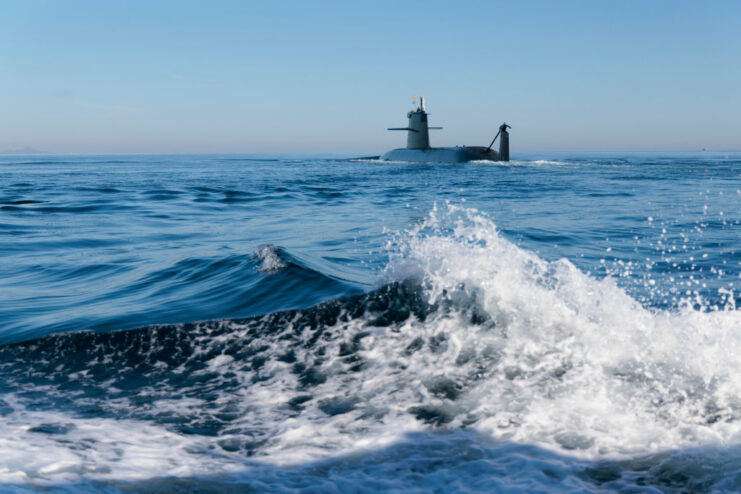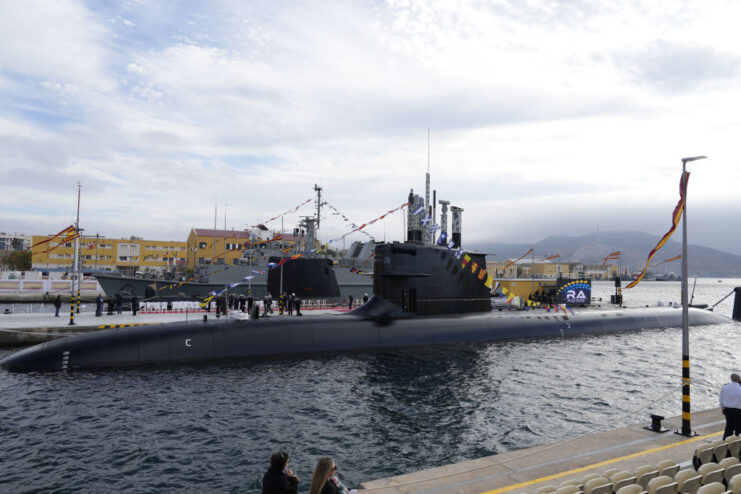When you think of countries at the forefront of submarine development, Spain likely isn’t the first that comes to mind. That’s not to say the nation hasn’t developed its own vessels. The latest is the S-80 Plus-class, four submarines powered not by a nuclear reactor, but through air-independent propulsion. Development began in the 1990s, but fell victim to several delays, one of which was caused by someone not looking over their work.

A need to upgrade an aging submarine fleet

Isaac Peral (S-81) completing snorkel maneuvering sea trials, 2023. (Photo Credit: Martin C. / Europa Press / Getty Images)
The idea of updating the Spanish Navy’s Cold War-era submarines came about after the French began looking into replacing their own fleet of S-60 Daphné-class vessels. One of the designs proposed, dubbed the “S-80,” featured a new teardrop hull and a slew of new weaponry and sensors. However, it proved to be too expensive and was rejected.
Around this time, the Spanish firm Bazán also began to design a new submarine, which shared similarities with the proposed S-80. This led to a joint venture that was agreed upon by the Spanish Navy in 1998, but on the condition that the new vessel would be powered via air-independent propulsion for better endurance underwater.
That should have been the end of it, but other requests emerged as time went on. While initially focused on defense, naval officials had since decided they wanted a submarine for “power projection,” meaning that, on top of its increased endurance, it needed the ability to fire land-attack missiles.
Once that was confirmed, the Spanish government signed an agreement for four units.
Delay after delay after delay…

Handover ceremony for the Isaac Peral (S-81), 2023. (Photo Credit: Paul Hanna / Bloomberg / Getty Images)
At first, the plan was to have the first S-80 Plus-class submarine ready for delivery by 2011. Unfortunately, the project was soon hounded by delays, pushing the date to 2023. The first delays were caused by the government, as officials couldn’t agree on what company would supply the combat system. Shortly after, Spain suffered a budget crisis.
However, those were minor compared to the glaring error that was discovered in May 2013. Once construction began, it was found that one of the naval engineers had miscalculated the weight of each vessel, thanks to a decimal being put in the wrong place. This meant the submarines were between 75-100 tons heavier than anticipated, putting them at risk of not being able to resurface after submerging.
General Dynamics Electric Boat was brought in to resolve the issue, which involved lengthening each vessel by 10 meters and increasing the overall displacement by 100 tons. The increased size of the submarines also meant that their port needed to be enlarged.
This redesign took until the end of 2014 and saw the project go over budget by 30 percent. It also meant that the company in charge of constructing and delivering the submarines, Navantia, wouldn’t be able to complete the first unit until much later.
S-80 Plus-class specs

Isaac Peral (S-81) completing snorkel maneuvering sea trials, 2023. (Photo Credit: Martin C. / Europa Press / Getty Images)
S-80 Plus-class submarines have a displacement of 2,965 tons, which is dispersed over a length of nearly 266 feet. The combat system that was eventually agreed upon is the VC 9.0 SCA, which is equipped with active and passive sonars that have accurate electromagnetic detection systems. The system allows multiple targets to be acquired.
As aforementioned, the submarines are powered by air-independent propulsion, featuring three bioethanol engines and a single electric motor. This method affords the class a range of 5,000 miles, and speeds of up to 22 MPH when surfaced and 14 MPH once submerged.
To ensure the vessels can conduct their tasks in secret, low noise, radar, magnetic and infrared signatures were used, all of which reduce the risk of detection. This is of particular interest to Spain’s Special Forces, who need the ability to travel to remote places fast, without enemy combatants knowing.
S-80 Plus-class submarines were given the requested ability to launch land attacks, as well as sea ones. Each vessel is capable of launching an array of torpedoes and missiles, including the UGM-84 Sub-Harpoon Block II, DM2A4 torpedoes, Exocet missiles, MK48 torpedoes, TP2000 torpedoes, Spearfish torpedoes and Blackshark torpedoes.
The first S-80 Plus-class submarine enters service

Handover ceremony for the Isaac Peral (S-81), 2023. (Photo Credit: Paul Hanna / Bloomberg / Getty Images)
In mid-2022, the first S-80 Plus-class submarine, the Isaac Peral (S-81) embarked on seal trials, with the vessel conducting her first static dive that March. The remaining three – the Narciso Monturiol (S-82), Cosme García (S-83) and Mateo García de los Reyes (S-84) – are slated to be delivered in 2024, ’26 and ’28, respectively.
